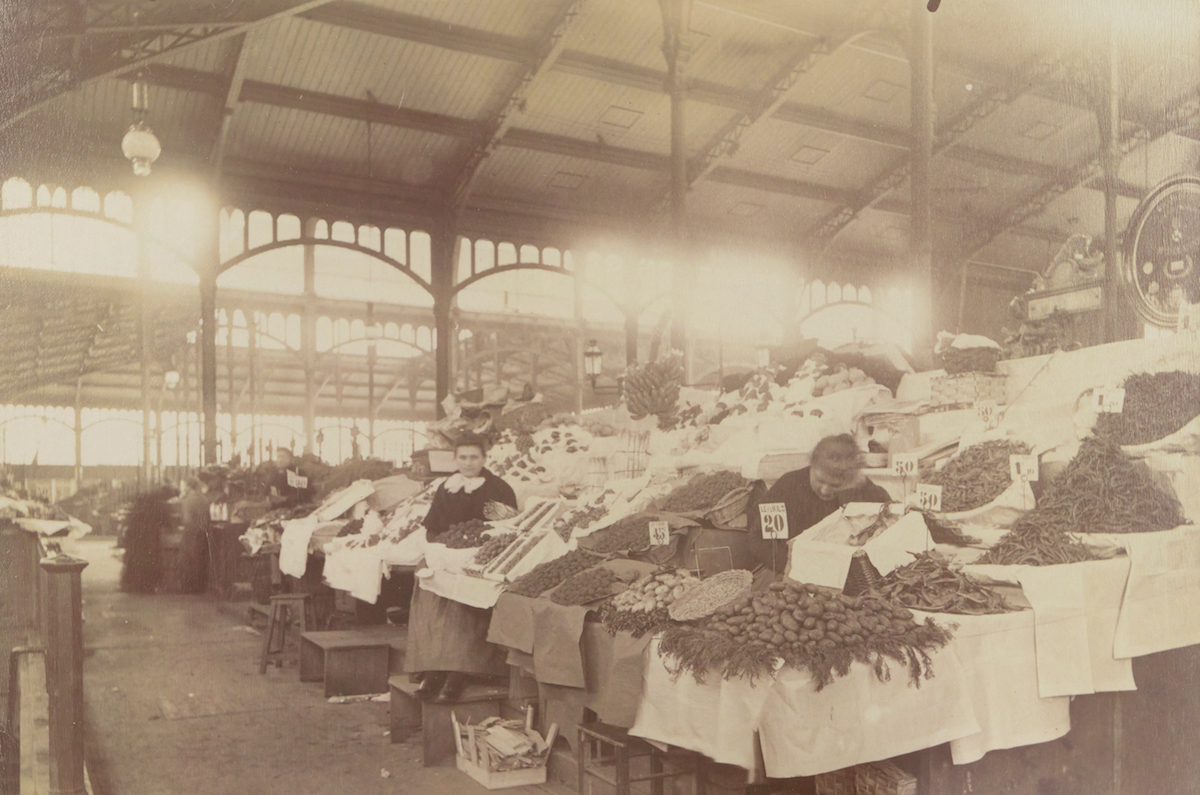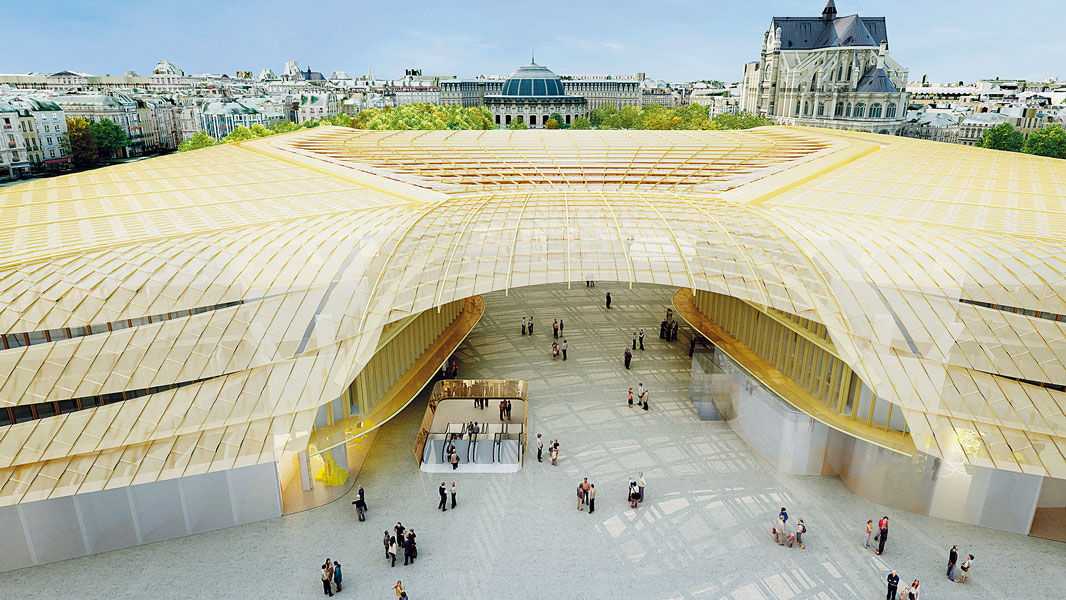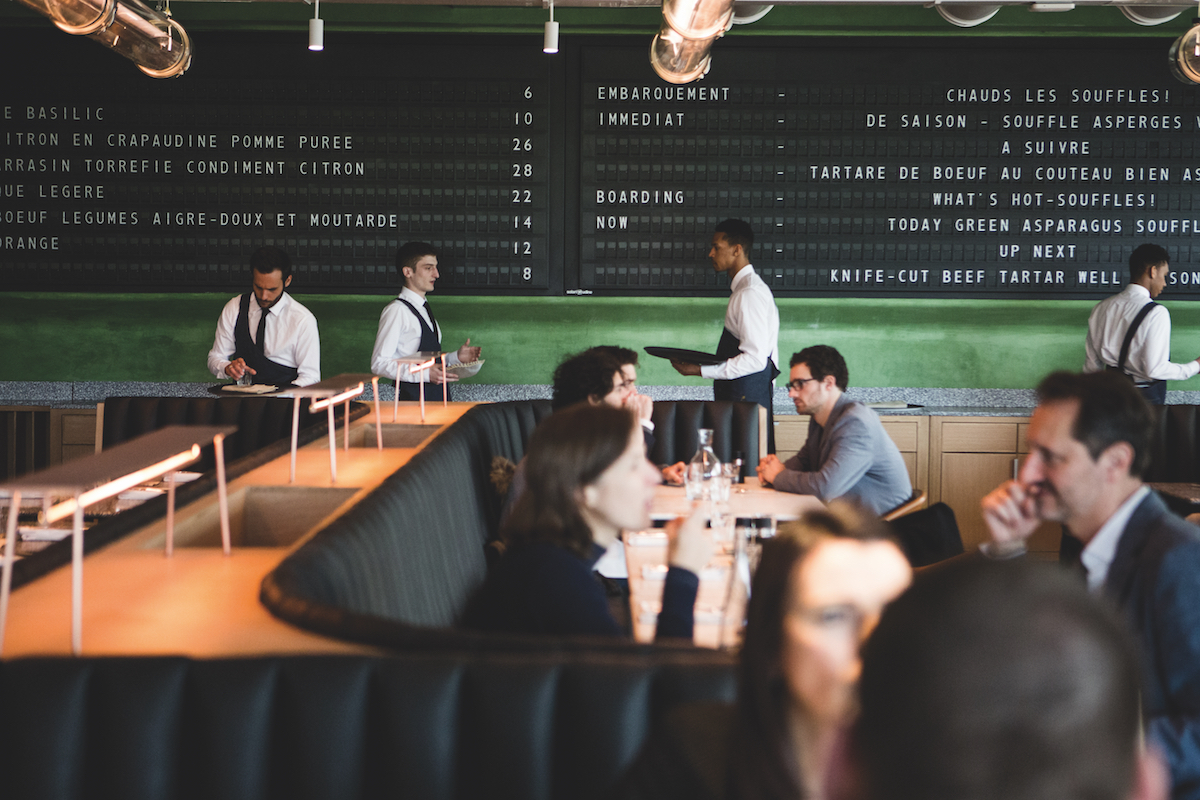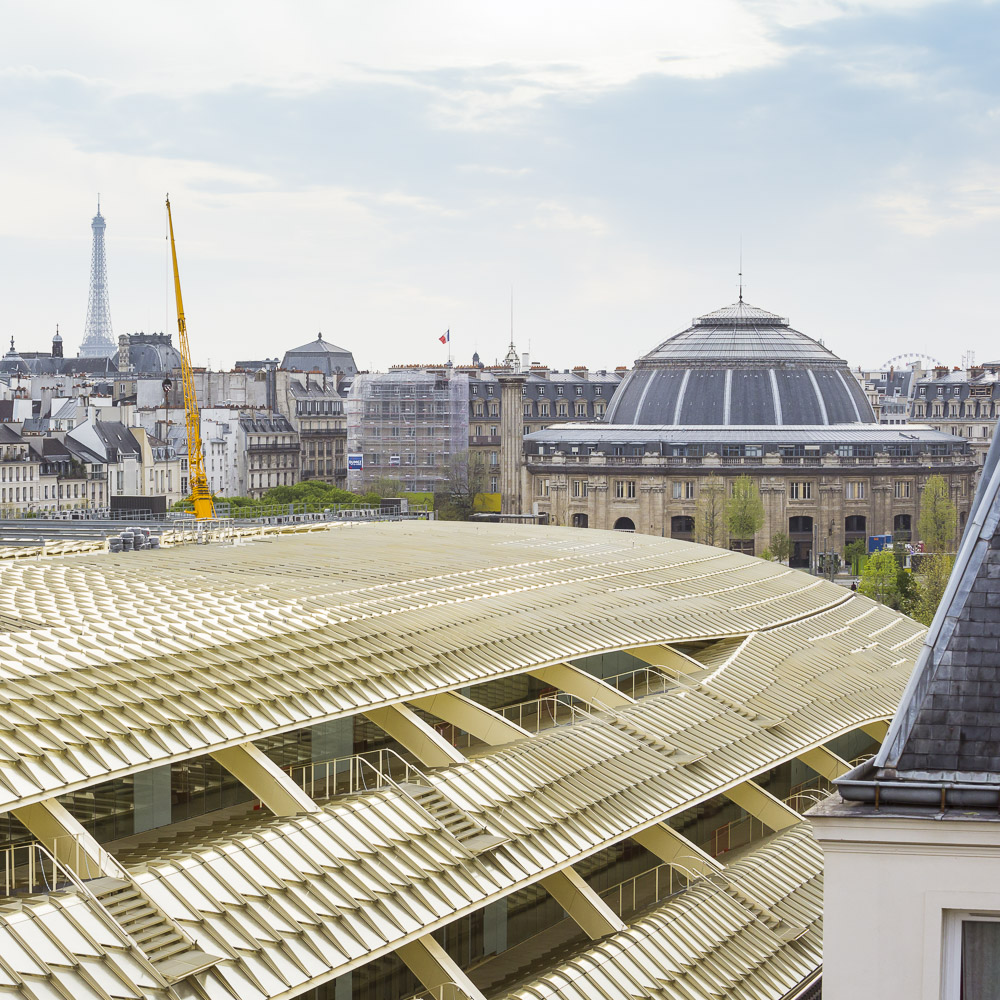The Belly of the Beast
by Aaron Ayscough

Eugène Atget. Les Halles. 1898. Silver gelatin print. Bibliothèque nationale de France, Paris.
Mathilde had returned to Paris after five years in Cairo and wanted to meet for coffee. In a diplomatic job she had witnessed the Arab Spring and grown disillusioned; now she sought to enter the wine industry. Mathilde explained that her grandfather owned vineyards in the Roussillon. She thought she might get involved someday, and so, unsure of where to begin, she got herself a job at a gourmet grocer. “It was a terrible mistake,” she said. “I applied to Causses, because their shop in Pigalle is so cute. But they hired me and stuck me in the one in the Forum des Halles.”
I sympathized. I don’t know any Parisians who will voluntarily visit the shopping mall at Les Halles, which, despite reopening with great fanfare this April, retains a reputation as a good place to get your iPhone stolen. Les Halles was once home to the city’s central food market, popularly known as “the belly of Paris.” Since the Middle Ages, the market united all stages of the agricultural chain nourishing the city, from farmers and butchers to chefs and ordinary citizens. During the Second Empire, as Baron Haussmann drastically recast the capital along new axes, the city refurbished Les Halles under grand, modern structures of glass and iron, designed by the architect Victor Baltard. (Émile Zola’s novel Le Ventre de Paris takes place in Baltard’s market; the hero, an escaped political prisoner, becomes a fish inspector.) All this changed in 1969 when due to unmanageable congestion and perennial hygiene scares the markets were removed to Rungis, south of Paris. The city demolished Baltard’s pavilions, despite significant public protest, and left an urban lacuna that endured for over 40 years — until April’s inauguration of the new Forum des Halles, an ambitious renovation of the ratty underground mall of same name that has adjoined the site since 1979.

The new Forum des Halles is topped by a vast, yellowish canopy, designed by the architects Patrick Berger and Jacques Anziutti. It undulates overhead and resembles, from above, two-thirds of a giant unused condom. The canopy’s bright, complex curves are intended to create a feeling of openness and light, but in typical Parisian fashion, the inhabitants of neighboring buildings have already begun to complain of blinding sunlight reflecting off the roof panels. Openness, meanwhile, ceases as soon as one descends into the mall itself: traffic bottlenecks at a single escalator, and again at subsequent mandatory bag checks for anyone entering.
Beneath the canopy one can shop for Legos, housewares, or running shoes. But for what is, unbelievably, the second-most-visited mall in France, there is almost no place to eat. In the subterranean depths of the minus-third floor, a dirt-simple outpost of La Brioche Dorée, with its airport-quality pastries, makes for an odd contrast with a hypermodern McDonald’s, packed with hungry youth poking at touchscreens the size of film posters. There’s the aforementioned Causses for grocery shopping, but most concessions here are of the order of Starbucks and The Waffle Factory. On the ground floor is the Forum’s lone upscale eatery, an Alain Ducasse brasserie called Champeaux, with a view of the church of Saint-Eustache and what will one day be a park; for now one sees only a construction site through its wide windows. “Champeaux” was the name of this quartier in the 12th century, and also the name of a bygone Paris restaurant made famous in another Zola novel, L’Argent. But chef Bruno Brangea’s menu is as contemporary as French cuisine gets, offering raw fish plates alongside a smattering of brasserie classics and deconstructions intended for “le snacking.” On the English language menu, sauces for beef are listed under the designation “Pimp Your Ride.”

One day this spring I negotiated myself a seat for lunch at the bar, where I ordered a serviceably tasty duck parmentier that arrived with preheated swiftness, and a glass of technically correct but impersonal Mercurey that came sometime later. From menu to bill, it took about 25 minutes, impressive for a new restaurant of that scale. Yet there is no escaping the feeling that at Champeaux, as elsewhere in French cuisine, efficiency has taken priority over enjoyment. Fittingly, the restaurant’s only design extravagance is a large railway station-style Departures/Arrivals board announcing daily specials. It is a peculiar nod to the massive métro and RER station that both undergirds the Forum des Halles and, to a great degree, defines it.
The Forum’s unremarkable commercial offerings and its proximity to the RER hub of Châtelet-Les Halles mean that the mall will continue to appeal, primarily, to inhabitants of Paris’s largely immigrant, lower-income suburbs. (Metropolitan Parisians, after all, can conveniently visit any of ten other H&Ms not located in a bunker-like space awash with commuters.) Once we acknowledge this dynamic, the overt Frenchness of Champeaux can seem rather quaint and patrician. But it’s that or McDonald’s; après Ducasse, le déluge. Where, one might wonder, is the shawarma? Whither the tagine?

France is perennially preoccupied with a supposed loss of national identity from foreign, i.e. Muslim, dietary habits — Nicolas Sarkozy, during his unsuccessful re-election campaign in 2012, laughably called halal meat “the issue that most preoccupies the French.” Today the former “belly of Paris” shows little appetite, either, for multiculturalism on the plate. Londoners and New Yorkers, like my friend Mathilde, are in the process of rediscovering the value, both financial and sentimental, of their mixed culinary heritage. But the shoppers of Grand Paris who pass beneath the Forum’s mustard-colored carapace will remain excluded from that restoration. Once the people of Paris were told to eat cake; the Forum des Halles today says, “Let them eat La Brioche Dorée.”